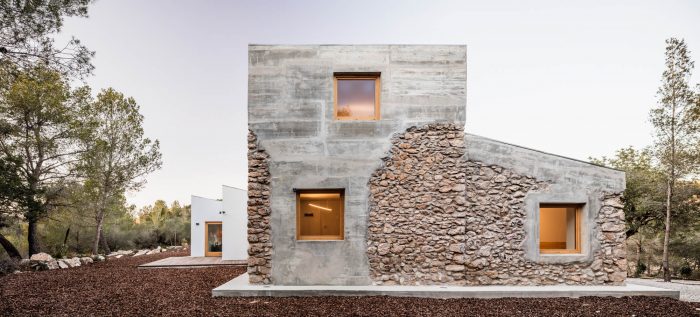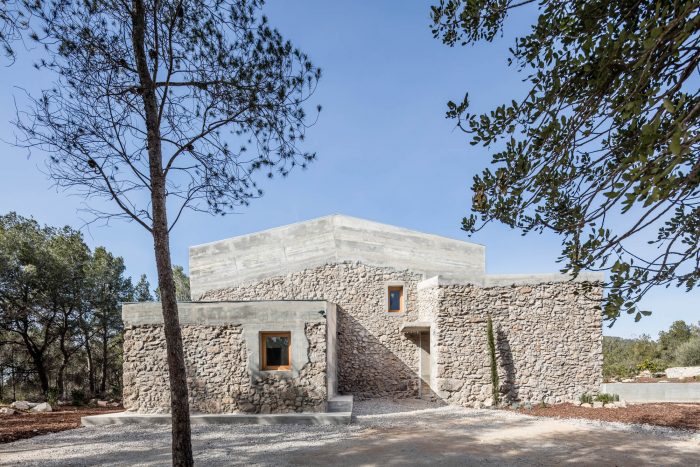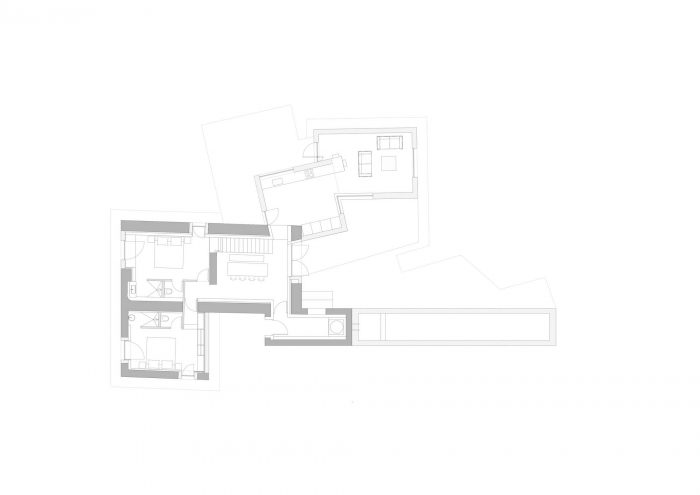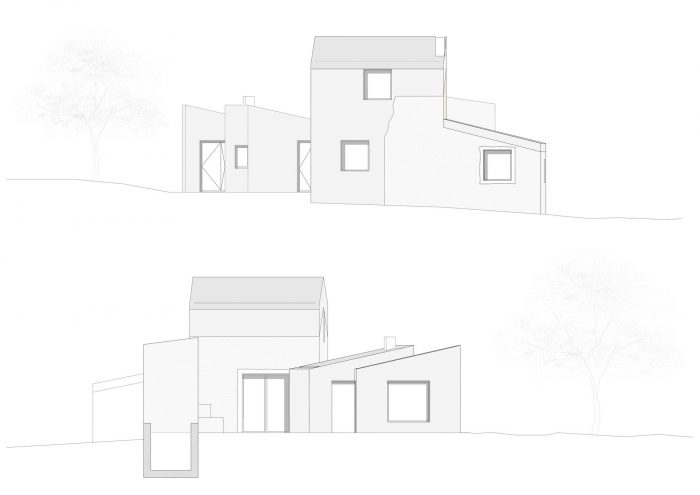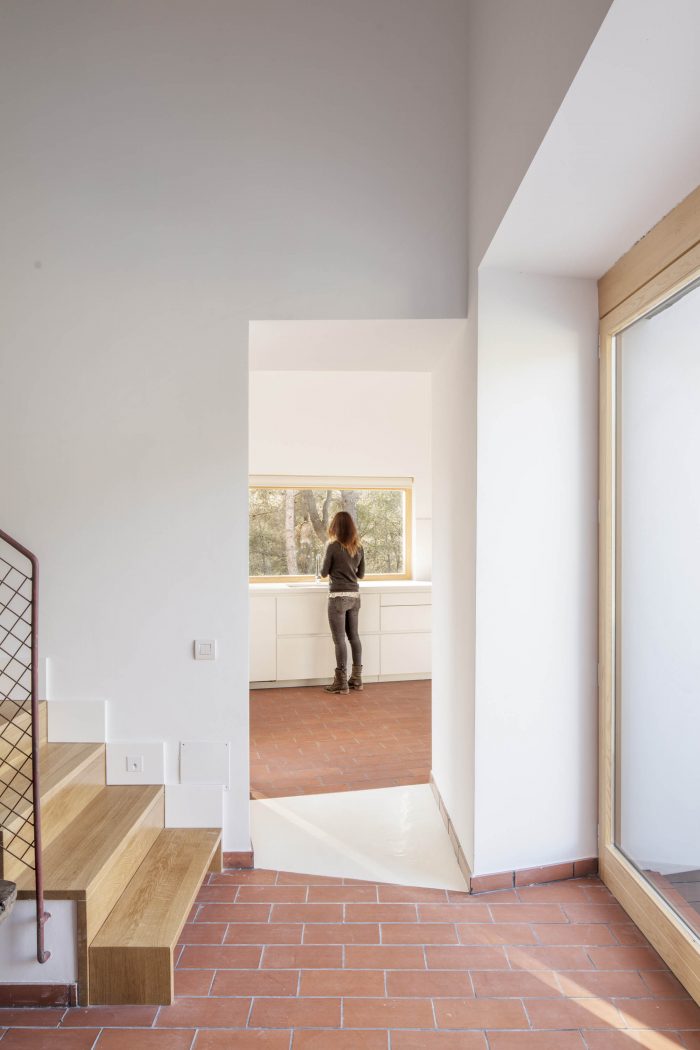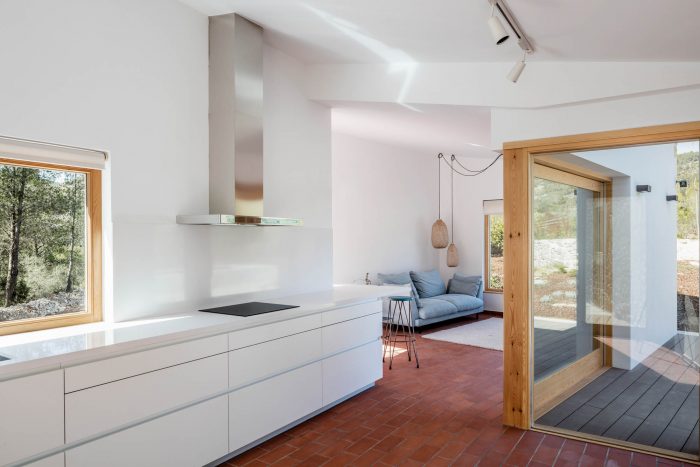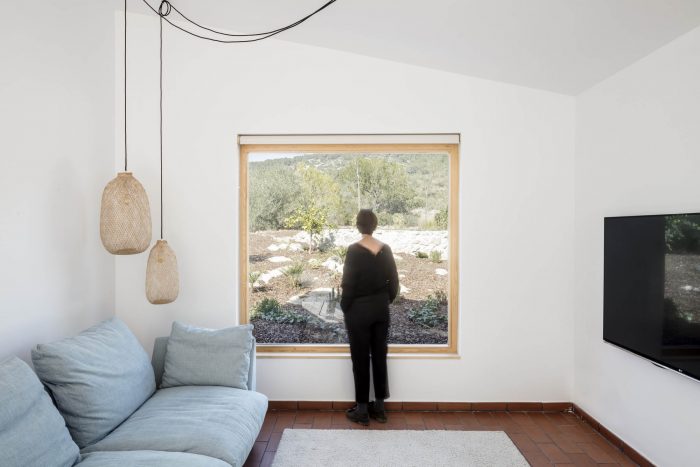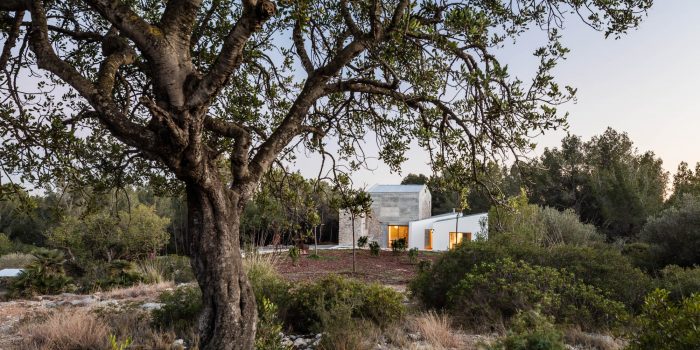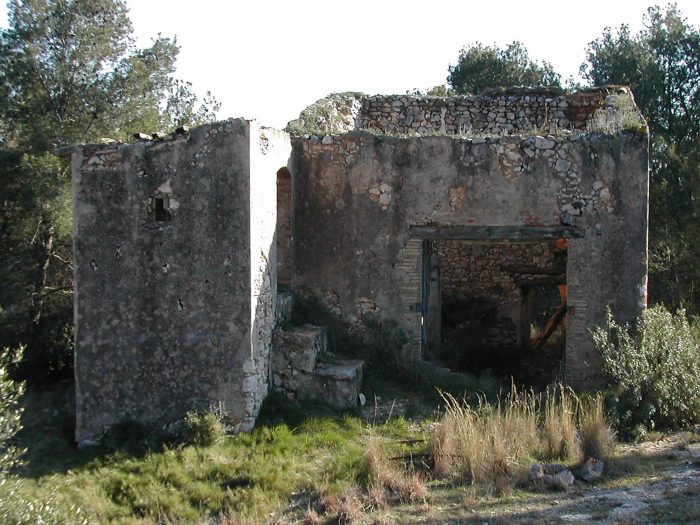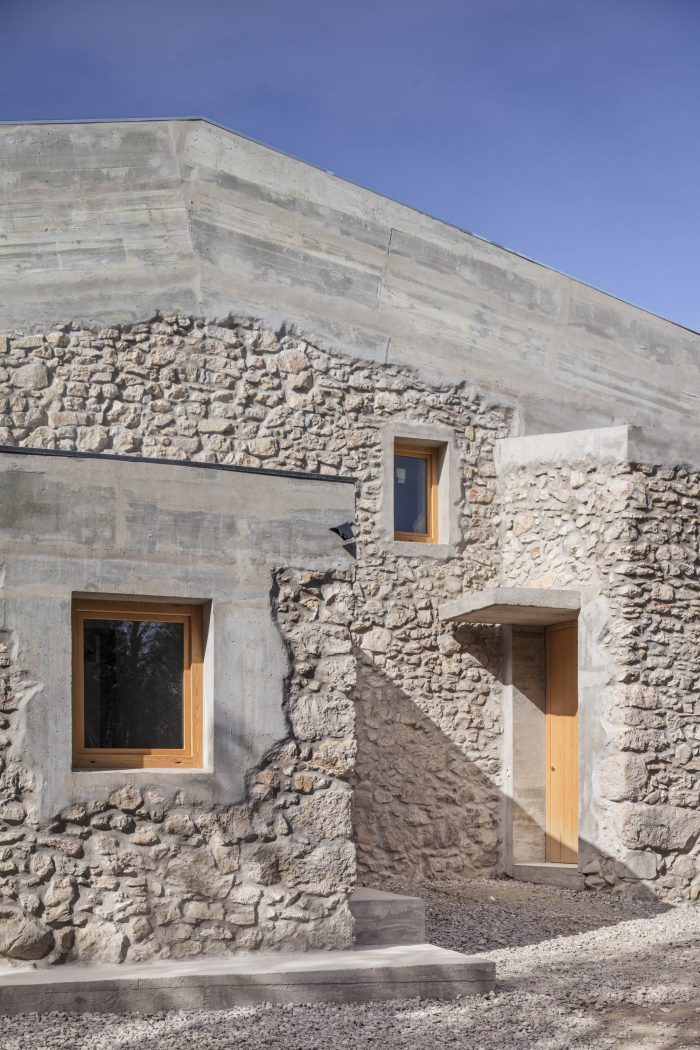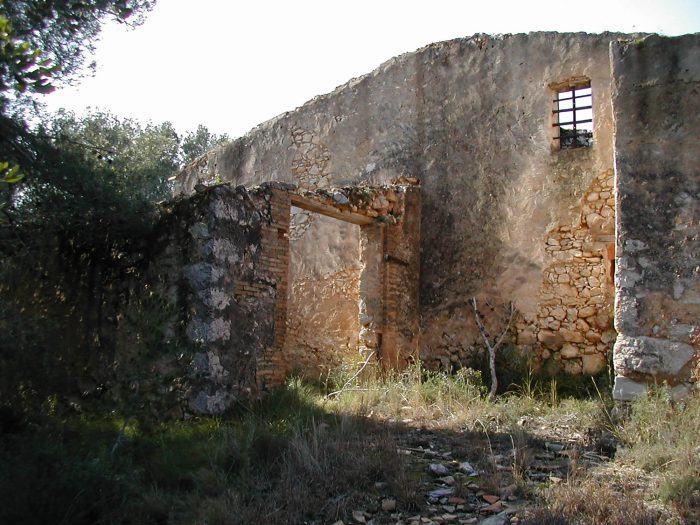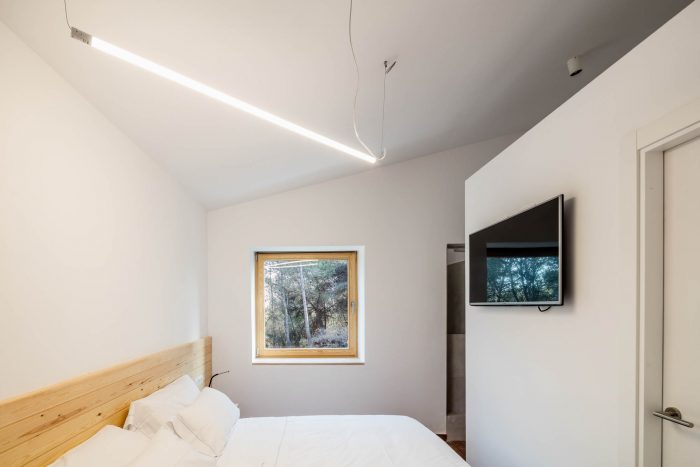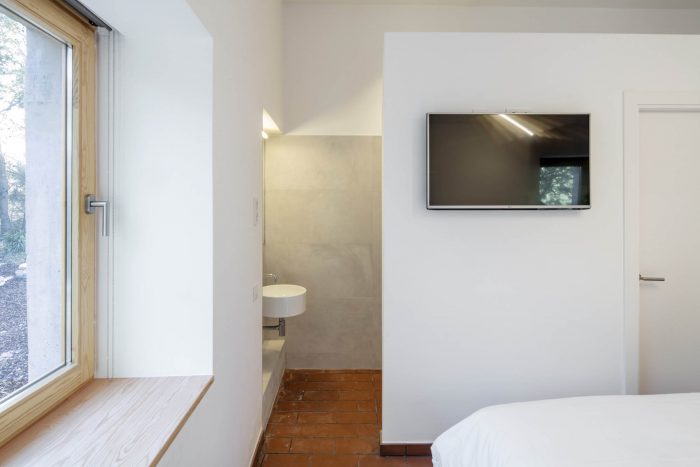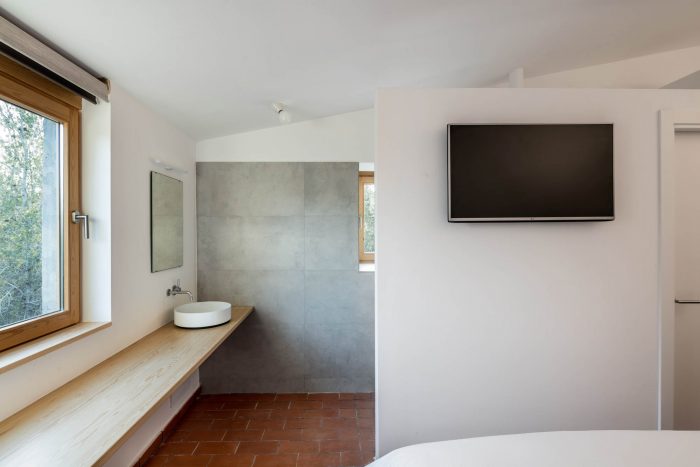Can Tomeu位于St Pere de Ribes镇外的Parc Natural de Garraf入口处,是属于Masa Corral d’en Capdet的建筑之一,该建筑建于1800年左右,用于农业和石器制作。它是加泰罗尼亚历史的一部分,也是国家纪念碑,这意味着基础设施需要尽可能保持其原始状态。坎-托梅乌(Can Tomeu)最初是为更大的马西亚(Masia)的劳动力准备的,马西亚负责整个庄园的维护。随着时间的推移,这栋废弃的建筑慢慢恶化成了一片废墟,只剩下了承重墙。投资项目的主要目的是将这一加泰罗尼亚的历史杰作恢复到原来的状态,同时利用这个机会将建筑物的体积增加30%。由于该建筑完全失去了屋顶,外墙老化并被破坏。
Located at the entrance of the Parc Natural de Garraf, just outside the town of St Pere de Ribes, Can Tomeu is one of the buildings belonging to the Masia Corral d’en Capdet, which was built around the year 1800 for agricultural and stone-crafting purposes. It is a piece of Catalan history and a national monument, meaning that the infrastructure needs to be kept in its original state wherever possible. Can Tomeu was originally intended for the labour force of the larger Masia, whcih was responsible for the maintenance of the entire finca. With time the abandoned building slowly deteriorated into a ruin, leaving only its bearing walls. The main purpose of the investment project was to restore this historical Catalan masterpiece to its original state, whilst using the opportunity to increase the volume of the buildings by 30%. Since the building completely lost its roof, the outside walls deteriorated and were worn down.
因此,修复的目的是恢复原有的空间,而允许增加的体积则被用来建造一个附属建筑。这样一来,焦点就集中在作为主要体量和入口的原始结构上,而扩建部分则保持了较为温和的风格,目的是使建筑与当时劳动者将坎-托梅乌称为自己家时的看法保持一致。因此,每个部分的建设都采用了不同的方法。现有的墙体在内部用混凝土加固,使其完全恢复到原来的高度,同时在外部展示旧的外墙。而新的附属建筑则是以现代风格建造的。新与旧的混合实现了项目的主要目标,即创造一个现代和未来主义的masia,同时又保留了古老的加泰罗尼亚基础设施。从功能的角度来看,入口被移到了旧酒窖,以其惊人的双层高度通向房子的中央房间。卧室位于主房间的左侧(两个在底层,一个在上层),每个卧室都有自己的浴室。右边是新的附件,里面是厨房和客厅。这两个房间作为一个开放的空间,形成了新的增强体量的增加,并通过大玻璃门向外开放,让人直接接触到自然。中央房间、厨房和客厅都可以看到Garraf国家公园的全貌,让客人可以享受地中海乡村的美景。
Hence the restoration itself aimed at regaining the original space, whereas the permitted increase in volume was used to create an annex. This way, the limelight is shed on the original structure as the main volume, and entrance, whereas the extension remains more modest, the goal being to keep the building in line with how it was perceived by the labour workers at the time they called Can Tomeu their home. The construction of each of the sections was thus approached differently. The existing walls were reinforced with concrete on the inside, allowing them to return to their full original height, whilst showcasing the old façade on the outside. The new annex in contrast is built in modern style. The mix of new and old fulfils the main goal of the project, which was to create a modern and futuristic masia, whilst at the same time preserving the old Catalan infrastructure. From a functional point of view, the entrance was moved to the old wine cellar, leading into the central room of the house with its astonishing double height. The bedrooms are located to the left of this main room (two on the ground floor and one on the upper floor), each with its own en suite bathroom. To the right, the new annex holds the kitchen and living room. These two rooms, as one open space, form the new enhanced volume increase and open up to the exterior through big glass doors, giving direct access to nature. The central room, the kitchen and the living room have a full view into the Garraf National Parc allowing its guests to enjoy the Mediterranean countryside.
外部空间是在附属建筑和建在地面上的纵向池塘之间创造的,可以充分体验到Garraf的广阔空间。高架池塘还将建筑与道路隔开,形成视觉屏障,使路人无法看到屋内的情况。该项目为古老的masia带来了新的生命,展示了其原有的基础设施,同时用清晰有力的几何线条重新设计了内部空间,创造了新的空间体验。建筑群的修复是在最大程度上尊重环境的前提下完成的。遵循可持续发展的标准,以保护农村环境,促进可持续发展和自给自足的旅游。该项目通过使用太阳能电池板、柴油燃料储存罐,以及通过自然植物净化过程过滤的灰水和雨水的再利用,实现了建筑群的自主管理。
The outside space, which was created between the annex and a longitudinal pond built above ground level, allows to fully experience the vast expanse of the Garraf. The elevated pond also separates the building from the road and creates a visual barrier, so that passers-by cannot see inside the house. This project has brought new life to the old masia, showcasing its original infrastructure, whilst redesigning the interior spaces with clear and strong geometrical lines, creating a new spacial experience. The Architecture complex restoration is done with maximum respect to its environment. Sustainability criteria necessary to preserve the rural environment are followed, promoting sustainable and self sufficient-tourism. The project has been carried out in order to manage the architectural complex autonomously by the use of solar panels, diesel fuel storage tanks, and reuse of gray and rain-water filtered by natural phytodepuration process.
建筑师:Andrea Solé Arquitectura
面积:144 m²
年份:2017年
摄影:Adria Goula
制造商:AutoDesk, SANTOS, Soldevila
国家:西班牙
Architects: Andrea Solé Arquitectura
Area: 144 m²
Year: 2017
Photographs: Adria Goula
Manufacturers: AutoDesk, SANTOS, Soldevila.
Country: Spain


